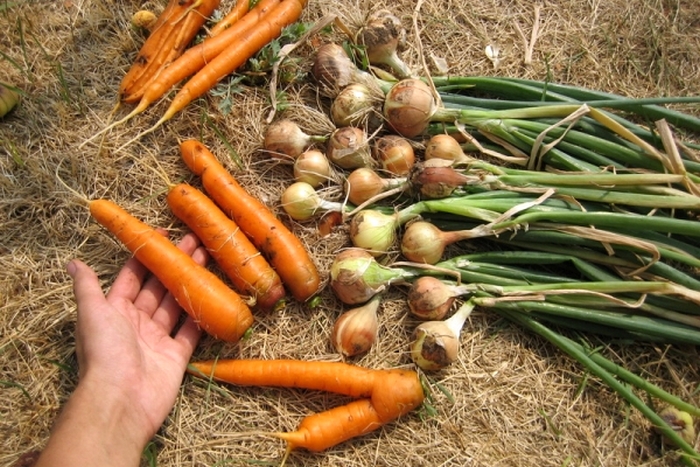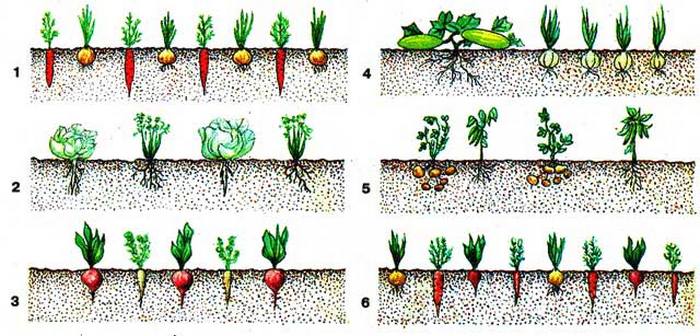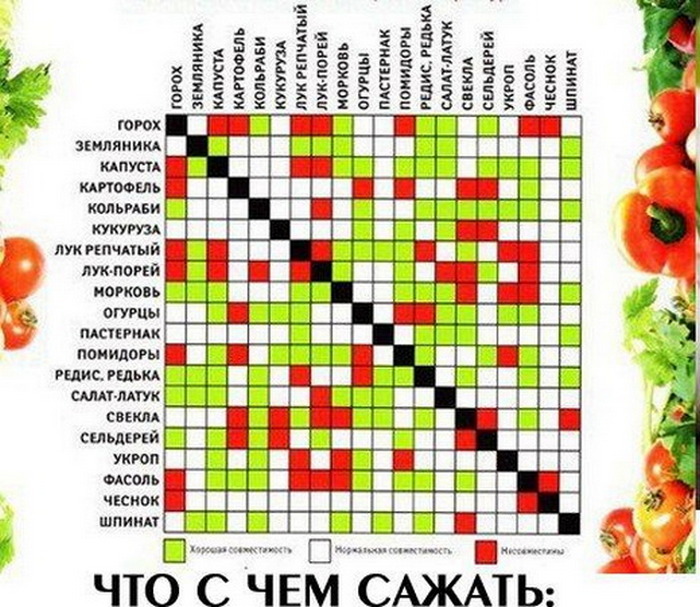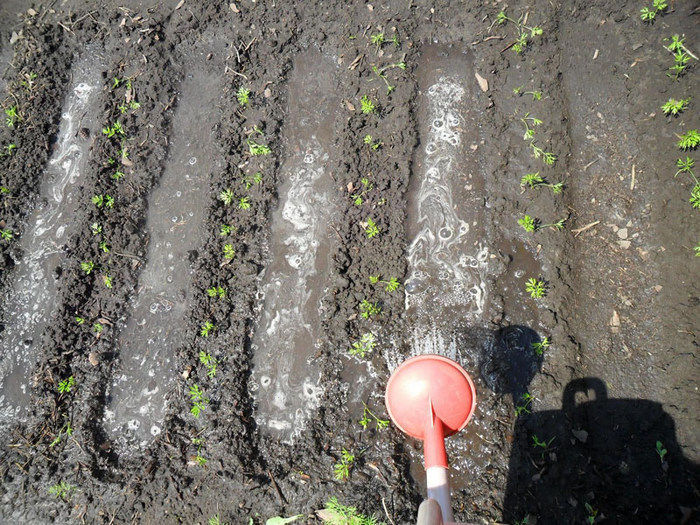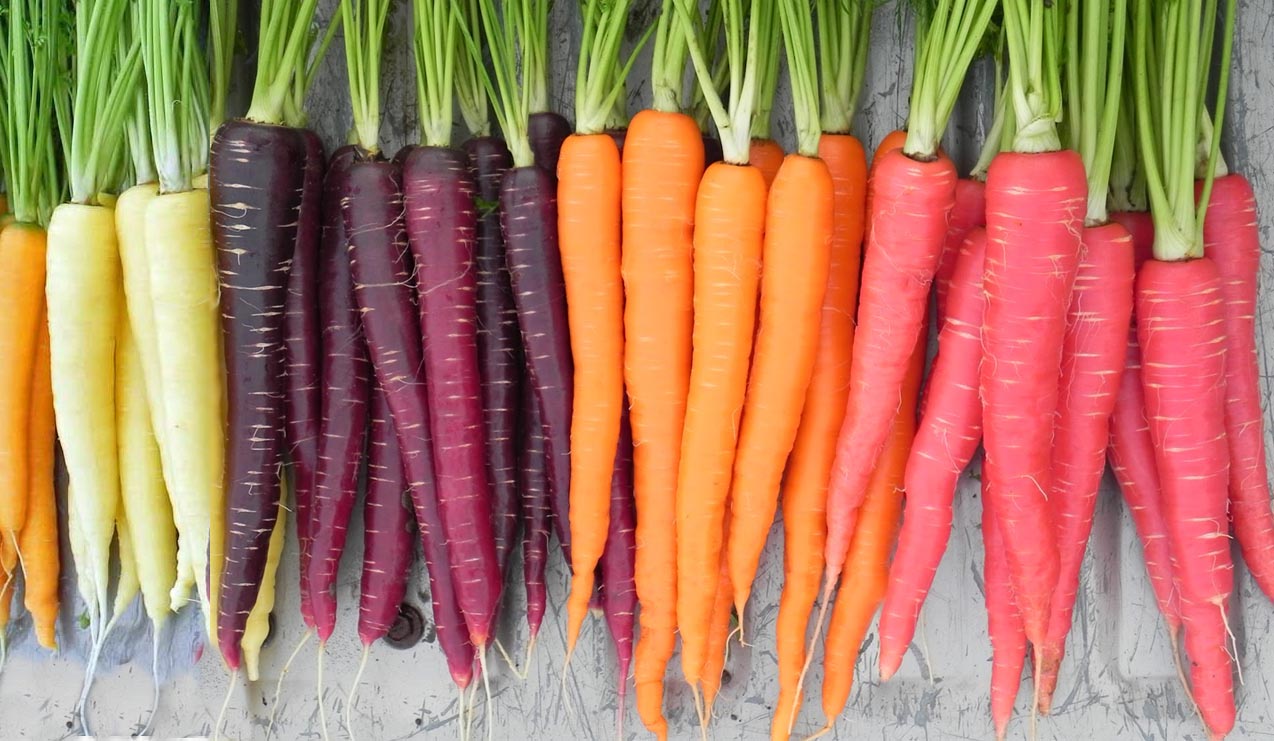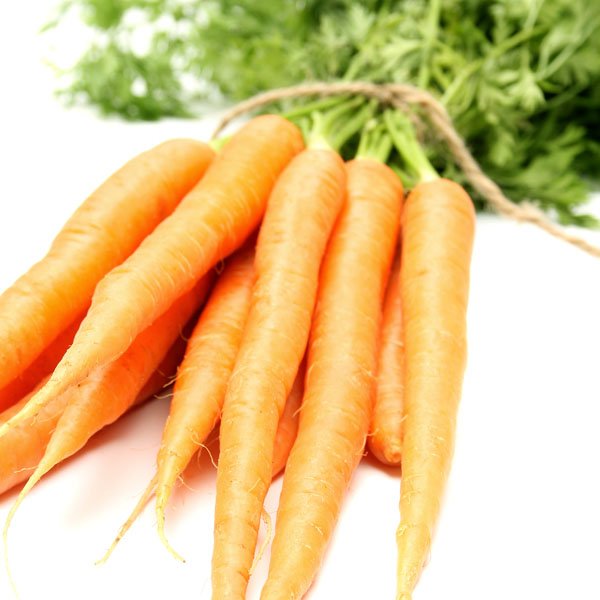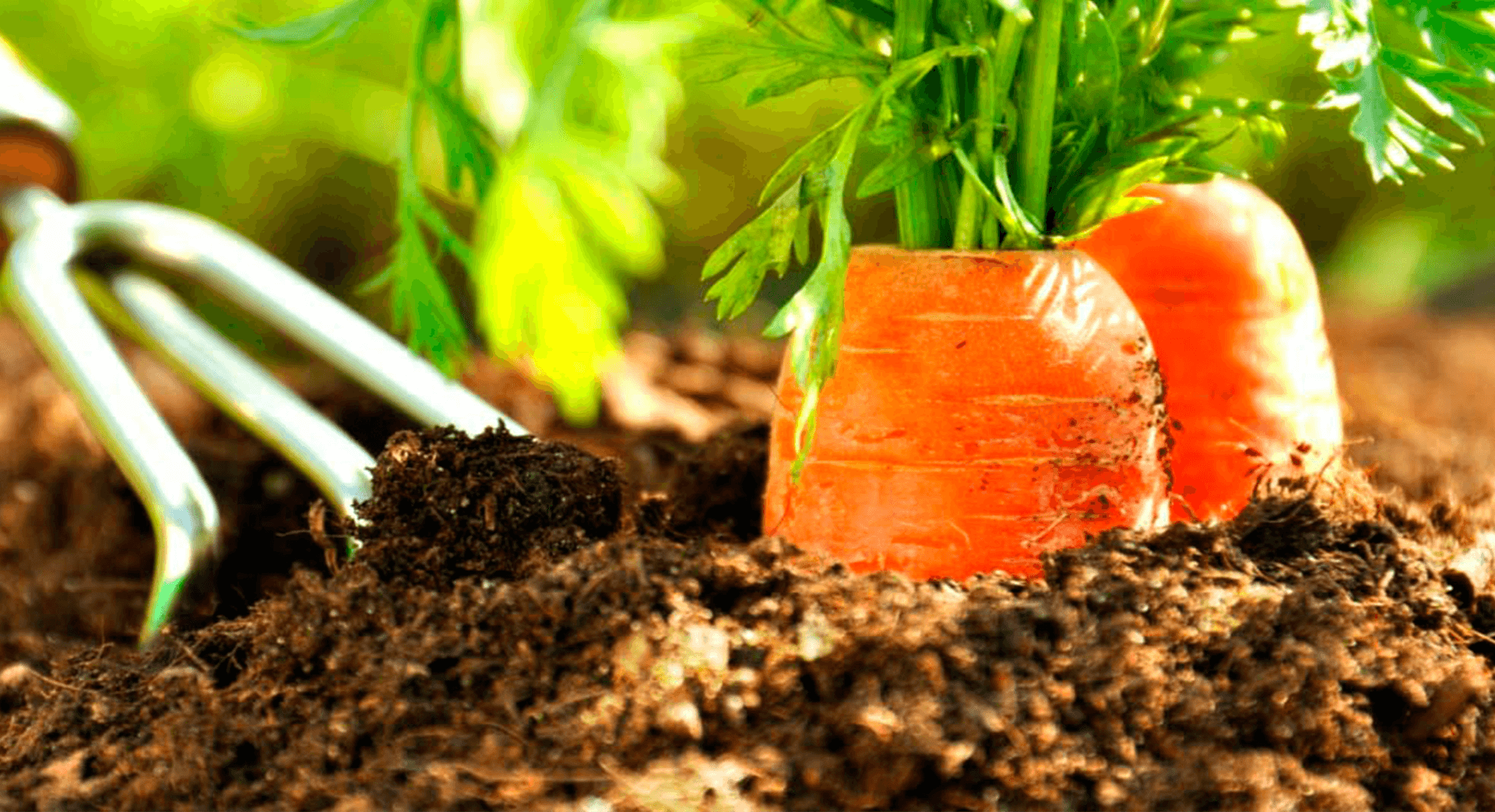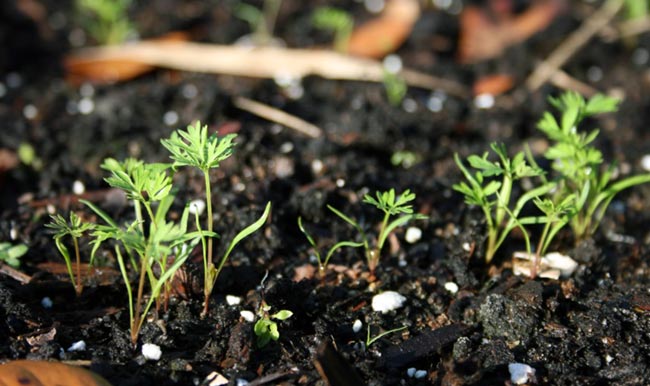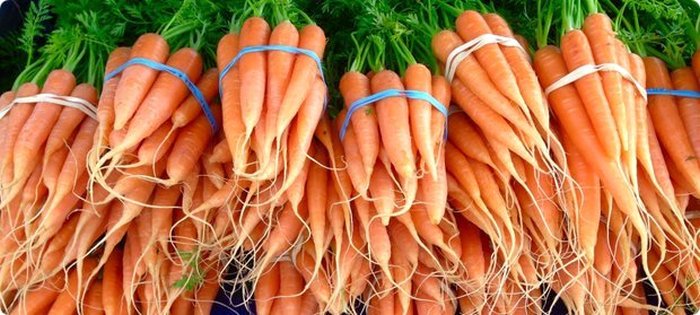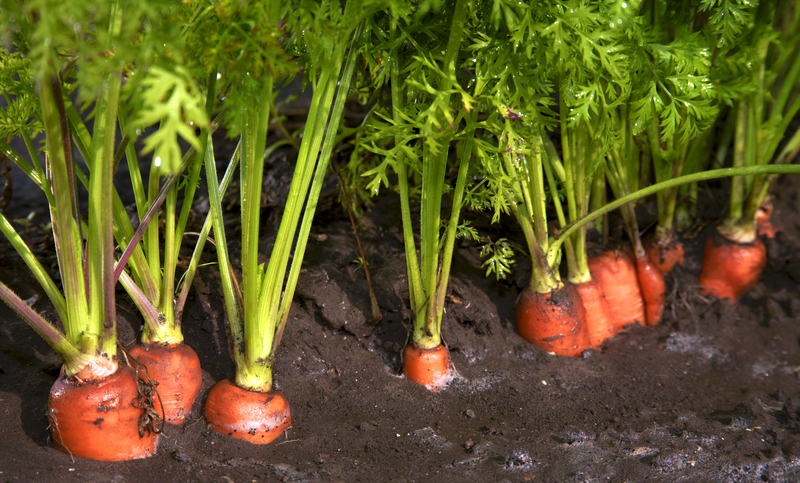Content:
Experienced amateur gardeners know that the joint cultivation of two or more garden crops, which perfectly complement each other, allows you to get a good harvest of all planted plants. This planting method is especially effective when growing onions and carrots together. Moreover, the onion in this bundle allows you to protect both crops from dangerous pests, and carrots, thanks to their spreading tops, provide it with reliable shading.
It is especially important that planting onions and carrots in the same bed is completely safe from the point of view of their compatibility. At the same time, such a planting of two crops will help to add an element of originality to the design of the garden.
Why can they be grown together
For planting onions and carrots on the same bed there are the following compelling reasons that are generally perceived as advantages of this method:
- First of all, the roots of the bulbous plant are located much higher than the rhizomes of the carrots, which does not prevent them from getting along together on the same bed;
- Secondly, with such a landing, a noticeable reduction in the area allocated for carrots and onions, which is very beneficial to owners of small plots;
- And, finally, when growing carrots, you still have to allocate significant acreage for it, so that the onion placed in the aisle will not constrain it at all.
We add to this that since the collection bulbs occurs earlier, carrot fruits are given time and complete freedom to develop well loosened soil. In addition, arrow-shaped ends are usually formed on the bulbous plant, which dry out over time and also fertilize the earth.
As a result, carrots grown together with onions tend to grow slightly larger and more juicy, and at the same time, they do not interfere with the ripening of the bulbs at all. Subject to the rules, their joint cultivation provides a rich harvest of both vegetable crops.
When considering this issue, it is important to note those plant species that are not allowed to grow near carrots. They are listed below:
- First of all, it is celery growing in the neighborhood, which does not protect carrot roots from annoying pests (like other spicy plants), but on the contrary, attracts them;
- Also, you should not plant carrots next to other well-known spices, such as anise and parsley, which have a strong aroma;
- This culture does not like the proximity of dill and similar herbs (for the same reason);
- If carrots are planted next to different types of root vegetables (beets and horseradish, in particular), this can lead to their unwanted struggle for valuable and nutrients.
For this reason, sowing these crops too closely and growing them together is highly undesirable.
Add to this that it is advisable to arrange carrot plantings as far as possible from apple trees, which affect the taste of the fruits of both plants (for the worse).
Joint boarding rules
There are no specially developed recommendations on the technique of joint planting of carrots and onions. However, gardeners have invented schemes that, when used, next to a carrot root crop, it is possible to grow sets, onions and shallots.
The only condition which should be performed when planting bulbs in the vicinity of carrots is compliance with the specified the distance between the rows, which, according to a long-established tradition, is chosen within 15-20 cm.
In each case, this indicator is usually selected individually.
Now we will consider the known schemes for planting onions and carrots, which provide optimal conditions for the joint ripening of these crops.
Landing patterns
Thanks to the enthusiasm and courage of innovative gardeners, original methods of co-cultivation have been found using a method called mixed.
At the same time, many methods are known to ensure a good harvest of both crops. Some of the gardeners were able to come up with a method of alternating individual rows, while someone else was better at joint sowing of onions and carrots on the same bed, the planting patterns of which can be completely different.
The second option is chosen most often when planting carrots and onion sets together. Among the most popular planting schemes in a mixed bed, the following should be highlighted:
- The carrot seeds are first mixed with the onion kernels, after which the mixture can be sown thickly into the furrows;
- Another method involves gluing seeds to toilet paper, after which the formed strip is rolled along the entire length of the bed;
- According to another scheme, onions are manually stuck into the ground, and carrot seeds are sown between its rows;
- Finally, onion seedlings can be placed in pre-drilled holes with a fine stick, while adjacent furrows are simultaneously sown with carrots.
Since carrots emerge later than onions in time, in some cases, bulbs are planted in a separate row along the edges of the formed beds (they are also called "beacons").
If you want to check each of the schemes for suitability for specific conditions, experts advise you to break one sample of such a bed in the garden in the garden, placing them in the neighborhood. This is the only correct approach that allows you to visually compare different landing methods and choose the most optimal one for a given site.
Landing order
Any vegetable crops, if planted together or apart, require thorough soil preparation, which must first be well loosened and fertilized with high quality.
In order to grow a good harvest of onions and carrots, you must observe following soil preparation rules:
- Since the fall, the soil dug up and well fertilized with organic matter with the arrival of spring should be carefully drilled;
- After that, you can start marking the boundary lines between the rows (for this, a twine is used, stretched into a string over the entire length of the bed);
- Further, along the outlined line, an even groove is made, into which a little ash and sawdust is then laid;
- Onion seedlings sit on top of the bookmarks.
The next furrow in order is prepared already for the second planting material (carrots), the seeds of which are simply sown or glued onto toilet paper, which is then spread in the beds. Adjacent rows with carrots and onions alternate at the discretion of the owner. At the end of the planting work, the grooves are lightly covered with earth (without tamping).
After the emergence of seedlings, they should be watered regularly to avoid excessive drying of the soil. If the very beginning of spring is chosen for planting, the rows will need to be insulated with any material suitable for this.
The planting order discussed above has long been used by amateur gardeners and is considered the most effective for any scheme. In this case, there is no need for frequent weeding of beds and enhanced protection from pests.
Disembarkation dates
Deciding when to plant onions and carrots in the same garden is also important for a good harvest of jointly grown vegetables. The specific time for sowing carrots in prepared rows is selected, depending on its variety (mid-season or late). Since this crop does not require too much heat to germinate, it can be planted even during night frosts down to -4 degrees.
This means that as soon as the average temperature index for the day has reached positive levels, and the ground has begun to warm up a little, you can safely start forming carrot beds.
When determining a specific date for planting these crops, amateur gardeners usually adhere to the following temporary schemes:
- From the third decade of April to May (its beginning), it is advisable to sow late and mid-season carrot varieties;
- If the soil is on an area of medium density, then the planting date can be postponed to the 2nd week of May;
- With a relatively light soil, even if planted at the end of May, it is possible to grow without problems and get a crop on time.
Consideration of climatic factors is also important when choosing the landing time. As an example, we will consider different regions of the country and indicate the approximate landing time.
In areas with a harsh climate, carrots should be planted in late May (early June), taking into account the choice of an early maturing species. Late varieties, due to prolonged planting times, may simply not have time to ripen in a short time. For central regions with a temperate climate, it is recommended to adhere to the classic seeding dates (April or the very beginning of May).
The timing of planting the bulbs is strongly influenced by what kind of winter it was in this region, and how much the soil had time to warm up to the current moment. The fact is that the onion is not allowed to be planted in too cold soil (otherwise it will "go to the arrow"). By the time of planting, that is, when spring comes, the soil allotted for this culture should warm up to at least +12 degrees.
In conclusion, we note that the joint cultivation of various varieties of onions and carrots contributes to their better development and sometimes allows you to get a larger harvest. The effectiveness of this method has long been tested in practice and is widely used by amateur gardeners.
